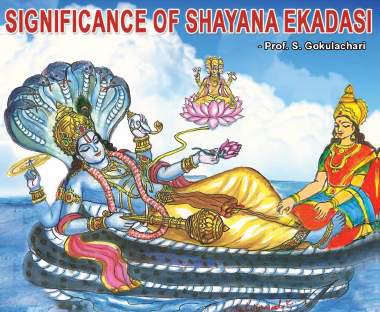Shayana Ekadasi / Toli Ekadasi / Tholi Ekadasi Ekadasi known as the ‘Day of Lord Vishnu, in Sanskrit means, ‘the Eleventh Day,’ occurs twice in a lunar month’, and is a very auspicious day to follow in the Hindu calendar. The story of Ekadasi is very interesting. In Satya Yuga, there was an awful Demon Read More
Tag: Toli Ekadasi
Shayana Ekadasi means “sleeping eleventh is the eleventh lunar day of the bright fortnight of the Hindu month of Ashadha. Thus it is also known as Ashadhi Ekadasi or Ashadhi. It is also known as Toli Ekadasi in Telugu.

